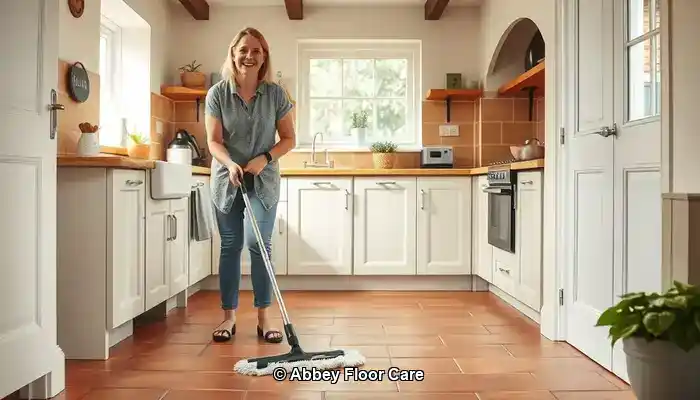
Last Updated on September 29, 2025 by David
Essential Techniques for Maintaining Pristine Terracotta Floors
-
- Understanding the Porous Nature of Terracotta is crucial, as its ability to absorb dirt occurs rapidly, particularly in moisture-rich regions like Surrey.
- The Importance of Effective Sealing cannot be overstated; it serves as a protective barrier against moisture and dirt, ensuring the longevity of your tiles.
- <b>Regular Maintenance Routines are Essential</b>—daily sweeping and weekly mopping with pH-neutral cleaners are key to preserving the aesthetic appeal of your tiles.
- Avoid Harsh Chemicals and Steam Mops to protect the sealant and prevent damaging the tiles’ surface.
- Eco-Friendly Cleaning Products are highly recommended, especially in homes with children or pets, ensuring a safe living environment.
- Consider Professional Cleaning and Restoration Services for deep cleaning and resealing, providing long-term protection for your terracotta floors.
- Strategic Use of Rugs and Mats in high-traffic areas can drastically reduce dirt transfer onto your tiles.
- Effective Moisture Management is Key—ensuring proper ventilation and promptly addressing spills can prevent stains and mold development.
Understanding Why Terracotta Floors Accumulate Dirt Quickly
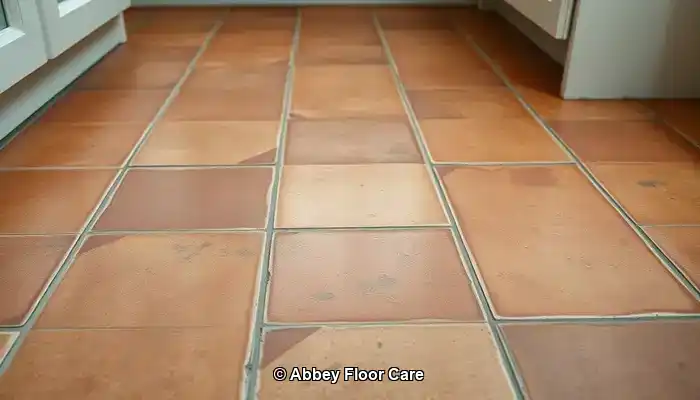
Terracotta tiles are not just visually appealing but are also a popular flooring choice, particularly in homes that embody traditional or rustic designs across Surrey. The rich colors and organic textures of Terracotta infuse character into any room. However, despite their aesthetic charm, terracotta is notorious for its quick accumulation of dirt, making it imperative for homeowners to comprehend the underlying causes of this issue to maintain cleanliness effectively.
Expert Recommendations: Top Products for Daily Terracotta Floor Care
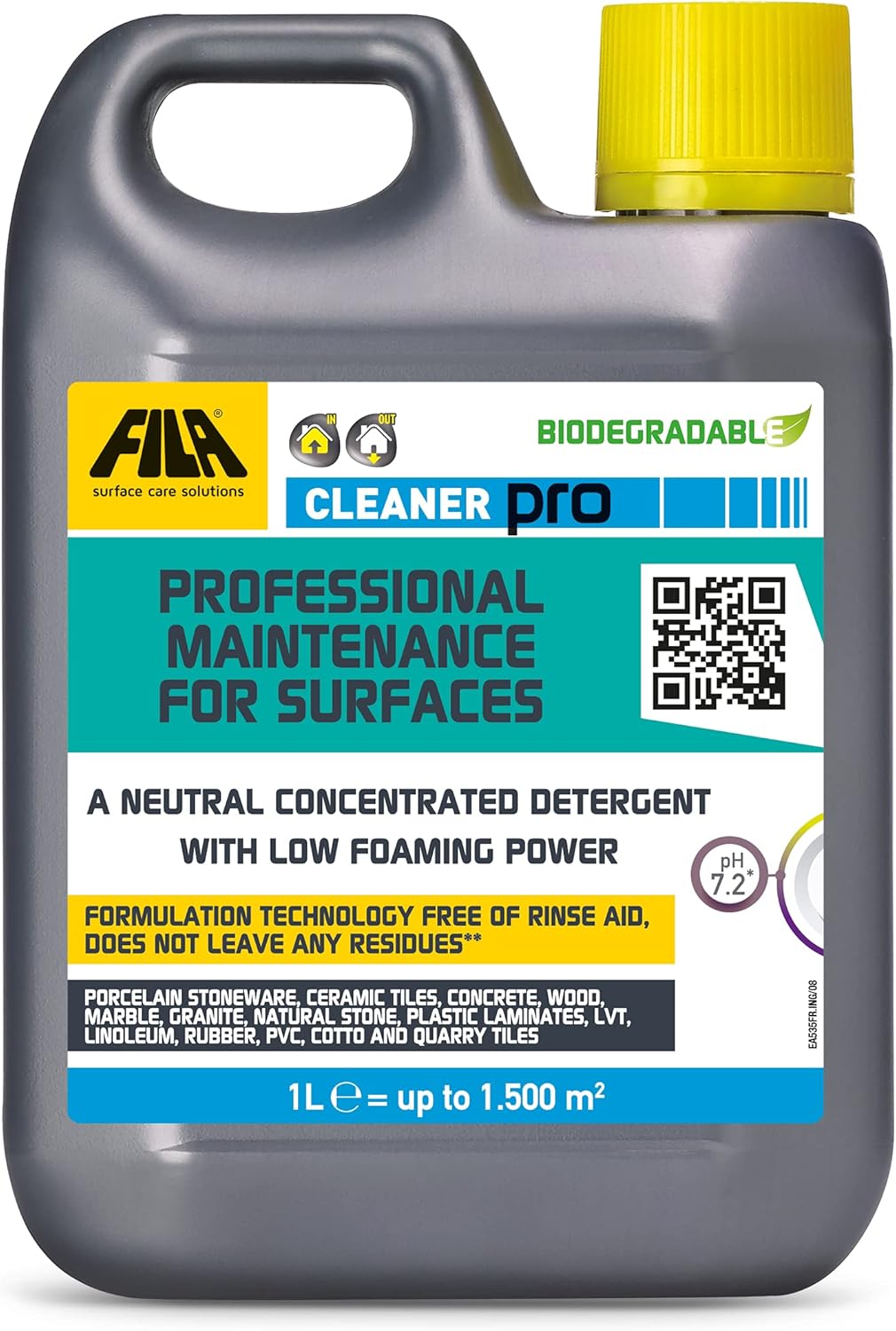
Fila Pro Floor Cleaner
|
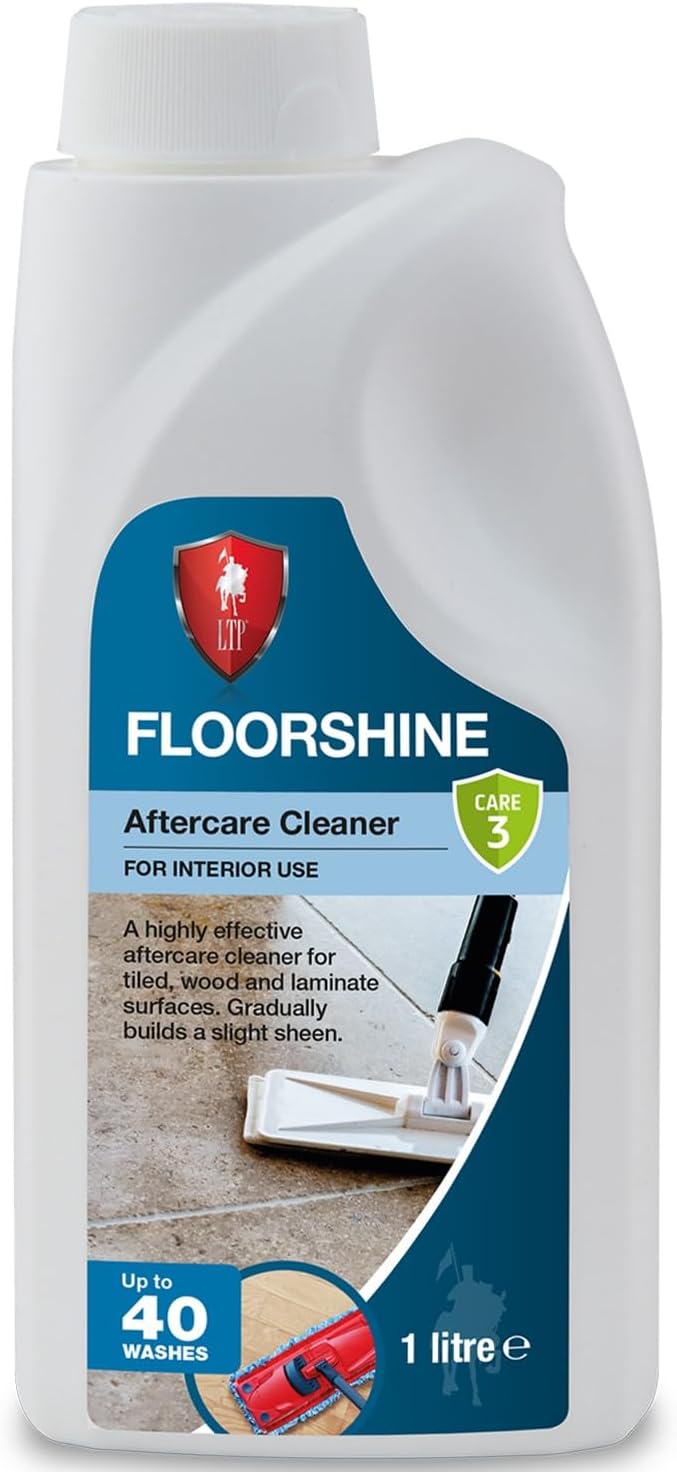
LTP Floorshine
|
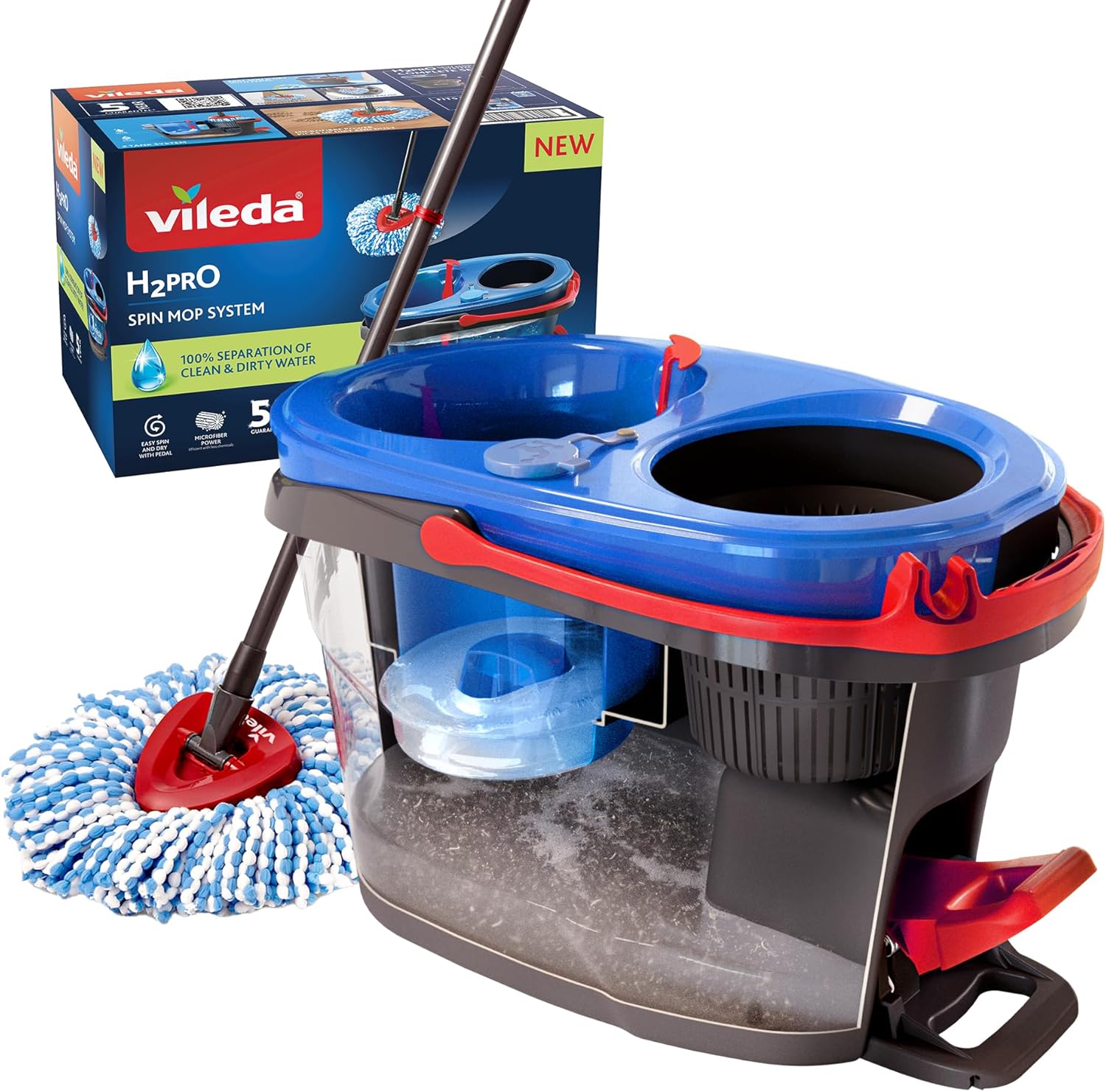
Vileda H2PrO Spin Mop System
|
Investigating Porosity: The Underlying Factor of Dirt Accumulation
The composition of terracotta involves natural clay that is fired at relatively low temperatures, resulting in a highly porous surface. This inherent porosity enables the tiles to absorb moisture, oils, and dirt much like a sponge. Consequently, grime can settle deep within the tile structure, making removal through standard cleaning methods increasingly difficult.
Unsealed terracotta tiles are particularly prone to dirt buildup. Without a protective coating, even minor spills or muddy footprints can leave enduring stains. Over time, this can lead to a dull, discolored appearance that may require professional cleaning services for effective restoration.
How Does Surrey’s Climate Influence Dirt Accumulation on Terracotta?
The weather conditions in Surrey significantly affect how quickly terracotta floors become dirty. The region is prone to frequent rainfall and humidity, which leads to moisture being brought indoors, especially in areas like entryways and conservatories.
Homes situated near wooded landscapes or gardens face an even greater risk. Soil, pollen, and organic material can easily be tracked onto terracotta surfaces, particularly if shoes are not removed before entering the home.
Everyday Habits That Contribute to Dirt Buildup on Terracotta
In addition to environmental influences, daily practices can exacerbate the dirt accumulation issue. Using inappropriate cleaning agents—such as acidic solutions or bleach—can damage protective coatings and harm the tile surface. While steam mops are popular for their convenience, they can unintentionally push moisture deeper into the tiles, worsening the dirt problem.
High-traffic areas, like kitchens and hallways, are naturally more vulnerable to wear and tear. Without a consistent routine of sweeping and mopping, dirt can quickly embed itself in the tile’s texture, making it harder to maintain cleanliness.
Proactive Strategies for Keeping Terracotta Floors Spotless
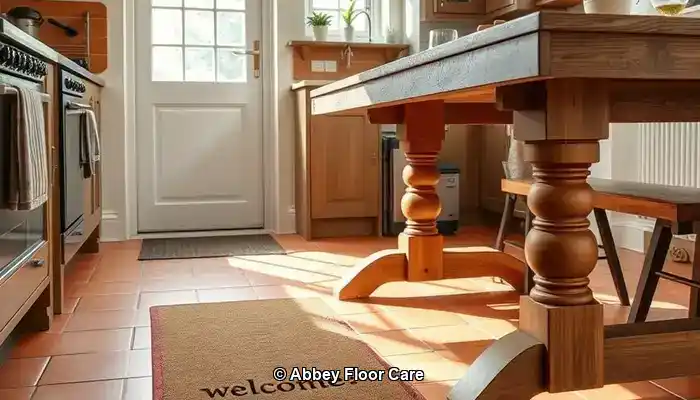
Maintaining the cleanliness of terracotta floors is not merely a reactive process; it necessitates implementing strategies that prevent dirt from accumulating in the first place. In homes throughout Surrey, where damp conditions and garden traffic are common, proactive measures are essential for preserving the natural beauty of terracotta tiles.
Sealing: Your Primary Defense Against Dirt and Stains
The most effective method for preventing terracotta from becoming dirty swiftly is through proper sealing. A high-quality, breathable sealant creates a protective layer that repels moisture, oils, and dirt. In Surrey, where humidity levels can vary, sealing is especially important for preventing water absorption, which can lead to staining and mold growth.
Experts suggest resealing terracotta every 12 to 18 months, depending on factors such as foot traffic and moisture exposure. In high-traffic areas like kitchens, hallways, and conservatories, more frequent resealing may be required. It is essential to select a sealant specifically designed for porous stone and avoid glossy finishes that can trap dirt on the surface.
Smart Placement of Rugs and Mats for Tile Protection
Carefully placing rugs and mats can significantly reduce the amount of dirt that comes into contact with your terracotta tiles. Heavy-duty doormats at entrances can catch mud and moisture before it spreads inside. In busy areas like hallways or beneath dining tables, area rugs act as a protective barrier, helping to shield the tile from excessive wear.
For spaces that connect to outdoor areas, consider using washable runners for easy upkeep. These not only protect the tiles but also add warmth and aesthetic appeal to your living environment.
Managing Moisture Effectively in Homes Throughout Surrey
The climate in Surrey features frequent rain and humidity, which can accelerate dirt buildup on terracotta. To address this, use dehumidifiers in closed spaces and ensure proper ventilation throughout your home. Promptly clean up spills and avoid leaving wet items—like shoes or towels—on the flooring.
If your terracotta is installed in a conservatory or garden room, consider installing blinds or UV filters to minimize condensation and protect against sun damage. These simple adjustments can significantly affect how your tiles age over time.
By combining effective sealing, thoughtful design choices, and moisture management, homeowners in Surrey can dramatically reduce the speed at which terracotta floors become dirty. In the next section, we will explore the best cleaning practices to maintain a fresh, natural appearance every day.
Optimal Cleaning Methods for Terracotta Tiles
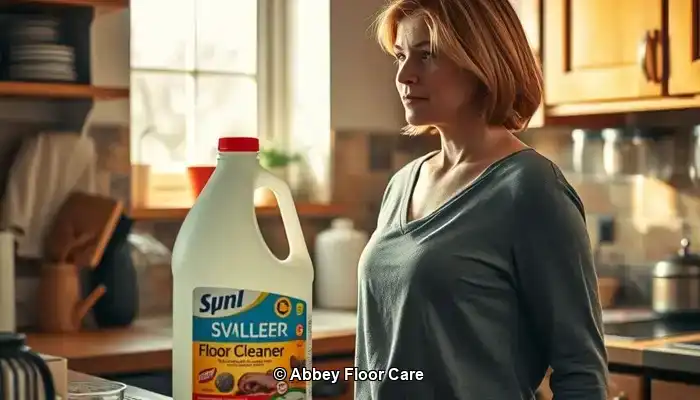
Even with appropriate sealing and preventive strategies in place, terracotta floors necessitate ongoing care to retain their inherent beauty. The key lies in utilizing the right methods and selecting products that clean effectively while preserving the porous nature of the tiles.
Creating a Consistent Daily and Weekly Care Regimen
In homes across Surrey, where outdoor elements frequently enter living spaces, daily sweeping or vacuuming is crucial. Employ a soft-bristle broom or a vacuum designed for hard surfaces to eliminate dust, grit, and organic debris before it settles into the tiles.
For weekly maintenance, mop the floors with warm water mixed with a pH-neutral cleaner specifically formulated for natural stone. Avoid soaking the tiles; instead, use damp mopping as the best practice. Excess water can seep into the tile and lead to staining or mold growth, especially in older or inadequately sealed installations.
Selecting Suitable Cleaning Products for Terracotta
Choose cleaning products that are gentle yet effective. Look for labels indicating “stone-safe,” “non-acidic,” or “pH-neutral.” In Surrey, where eco-conscious living is increasingly embraced, many homeowners prefer biodegradable cleaners that are safe for both pets and children.
Steer clear of multi-surface cleaners containing bleach, ammonia, or citrus extracts. These ingredients can strip away sealants and etch the surface of the terracotta, making it more vulnerable to future staining.
For persistent stains, use a soft cloth alongside a diluted solution of a stone-safe cleaner. Avoid scrubbing with abrasive pads or wire brushes, as these can scratch the surface and complicate future cleaning efforts.
Cleaning Techniques to Avoid for Terracotta Floors
While steam mops offer convenience, they are not recommended for terracotta. The high heat and moisture can penetrate the tile and weaken the sealant, resulting in long-term damage. Similarly, acidic cleaners like vinegar or lemon juice—even when diluted—can erode the tile’s surface and lead to discoloration.
Stick to gentle cleaning methods and always test new products on a small, inconspicuous area before applying them to the entire floor.
Weighing Professional Care Against DIY Terracotta Maintenance
As homeowners in Surrey embark on their journey of terracotta floor maintenance, many start with DIY solutions. While routine sweeping and mopping can achieve a degree of cleanliness, there comes a time when professional assistance becomes not only advantageous but essential.
When is it Time to Consult a Surrey-Based Tile Expert?
If your terracotta tiles exhibit signs of significant staining, uneven color, or surface wear, it is prudent to seek the expertise of a professional. Tile care specialists in Surrey use advanced equipment and stone-safe products that penetrate deeper than average household cleaners. They can also evaluate whether your sealant has deteriorated and recommend a resealing schedule tailored to your home’s specific conditions.
Restoration services typically involve deep cleaning, stain removal, and reapplication of breathable sealants that safeguard the tiles without altering their natural appearance. For older or heritage properties, specialists may even reproduce the original finish to ensure authenticity is preserved.
Assessing Cost versus Longevity: Is Professional Help Worth It?
While DIY cleaning methods may appear more economical, they often yield only temporary results. Without adequate sealing and thorough cleaning, dirt continues to accumulate, necessitating more frequent maintenance and risking permanent damage.
On the other hand, professional care enhances the longevity of your terracotta floors. A single restoration session can revitalize color, eliminate embedded grime, and protect the surface for months or even years. In high-traffic areas such as kitchens and hallways, this investment proves beneficial, reducing ongoing maintenance and enhancing the overall visual appeal.
Homeowners in Surrey who prioritize long-term property care and curb appeal frequently discover that hiring expert services provides peace of mind and superior results. Additionally, many local providers now offer eco-friendly options and customized maintenance plans to suit individual lifestyles.
Identifying Eco-Friendly and Safe Cleaning Solutions for Terracotta
Terracotta’s natural elegance deserves a care routine that aligns with ecological principles. For homeowners in Surrey aiming to maintain clean floors without compromising health or sustainability, eco-friendly cleaning solutions are optimal. Fortunately, contemporary products and techniques facilitate the protection of both your tiles and household without resorting to harsh chemicals.
Non-Toxic Sealants and Cleaners: A Sustainable Option
Conventional sealants frequently contain solvents that emit volatile organic compounds (VOCs), which can linger in the air and detrimentally impact indoor air quality. Modern eco-friendly alternatives feature water-based formulations that are low in VOCs and safe for use around children and pets.
When selecting a cleaner, look for labels that indicate “biodegradable,” “plant-based,” or “stone-safe.” These products are specifically designed to lift dirt without harming the porous surface of terracotta. Brands specializing in natural stone care often provide concentrated solutions that can be diluted for everyday use, thereby reducing waste and packaging.
Safe Cleaning Alternatives for Households with Pets and Children
In bustling homes across Surrey, safety is as crucial as cleanliness. Avoid bleach, ammonia, and acidic cleaners like vinegar that can damage both the tile and pose risks to pets and young children. Instead, opt for gentle formulas derived from coconut oil, citrus enzymes, or mineral-based components.
For those who prefer DIY options, a simple blend of warm water with a few drops of castile soap can be surprisingly effective for light cleaning tasks. Always test any homemade mixture on a small area first to ensure it does not negatively affect the sealant or finish.
Adopting Sustainable Cleaning Practices
Practicing eco-friendly care extends beyond using the right products; it also involves embracing sustainable habits. Utilize reusable microfiber cloths and mops instead of disposable pads. Regular sweeping minimizes the need for frequent wet cleaning. When resealing, select products packaged in recyclable materials that have minimal environmental impact.
Many floor care professionals in Surrey now provide green cleaning packages, employing certified non-toxic products and sustainable methods. If uncertain where to begin, consider scheduling a consultation with a local expert to establish a routine that is both effective and environmentally responsible.
Ensuring Your Terracotta Floors Remain Beautiful
Terracotta flooring not only adds warmth, character, and timeless beauty to homes in Surrey, but its porous qualities necessitate careful attention to ensure it stays clean and vibrant. By understanding the factors that contribute to rapid dirt accumulation, properly sealing the tiles, and implementing smart cleaning practices, you can significantly reduce grime buildup and prolong the life of your flooring.
Whether managing a lively household or restoring a historic property, consistency is vital. Daily sweeping, pH-neutral cleaning, and seasonal resealing play significant roles in maintaining a polished appearance. When stains or signs of wear become apparent, do not hesitate to seek help from a local specialist for professional restoration services.
Utilizing eco-friendly products and safe cleaning regimens ensures that your floors remain visually appealing without compromising the health of your family or the environment. With the right approach, terracotta can continue to be a stunning highlight in your home for years to come.
Are you prepared to protect your floors intelligently? Contact us today for expert terracotta maintenance tailored to the specific conditions of Surrey. Let us assist you in keeping your home looking its best—naturally.
Frequently Asked Questions About Terracotta Maintenance
Terracotta floors are classic and beautiful, yet they require particular care. Below, we address some of the most common queries from homeowners in Surrey who wish to keep their tiles clean, protected, and visually appealing.
How Often Should I Reseal My Terracotta Tiles?
In most homes across Surrey, terracotta should be resealed every 12 to 18 months. However, this timeframe can vary based on foot traffic, moisture exposure, and whether the tiles are used indoors or outdoors. High-traffic areas such as kitchens, hallways, and conservatories may require more frequent resealing. If your tiles appear to absorb water or look dull, it is time to reseal.
Is It Safe to Use Vinegar or Bleach on Terracotta Tiles?
No—vinegar, bleach, and other harsh or acidic cleaners can seriously damage terracotta. These substances degrade sealants and etch the tile surface, leading to permanent discoloration. Always opt for pH-neutral, stone-safe cleaners specifically formulated for porous flooring.
What Type of Mop is Most Effective for Cleaning Terracotta Floors?
A microfiber mop is highly recommended. It effectively captures dust and dirt without scratching the surface and uses minimal water, which is crucial for porous tiles like terracotta. Avoid sponge mops or steam mops, as these can saturate the tiles and weaken the sealant.
Is It Safe to Use Homemade Cleaning Solutions on Terracotta?
Yes, but with caution. A mild mixture of warm water and castile soap can be effective for light cleaning. Always test any homemade solution on a small, hidden area first. Avoid anything acidic or abrasive, and never apply DIY cleaners to unsealed tiles.
What Steps Should I Take If My Tiles Are Already Stained?
If stains have set into your terracotta, professional restoration is the most effective solution. Experts based in Surrey can deep clean, remove embedded grime, and reseal the surface to restore the original color and texture of the tile. DIY methods might exacerbate the damage if inappropriate products are used.
The Article Tired of Dirty Terracotta? How to Keep It Clean Longer first found on https://www.abbeyfloorcare.co.uk
The Article Keeping Terracotta Clean: Tips for Lasting Freshness appeared first on https://fabritec.org
The Article Terracotta Clean: Tips for Maintaining Lasting Freshness Was Found On https://limitsofstrategy.com

